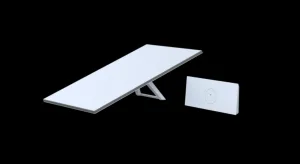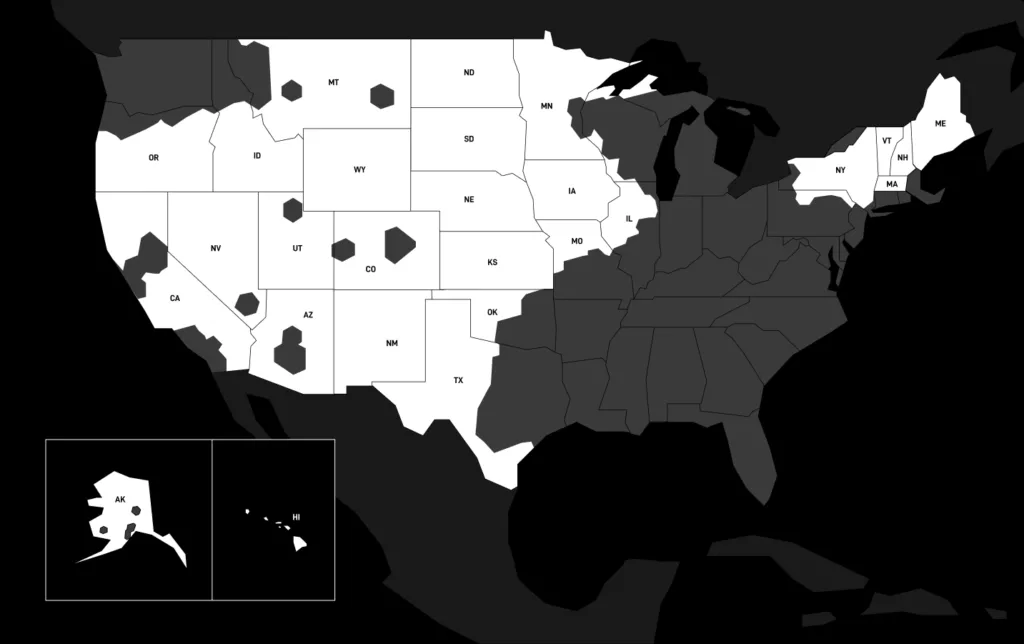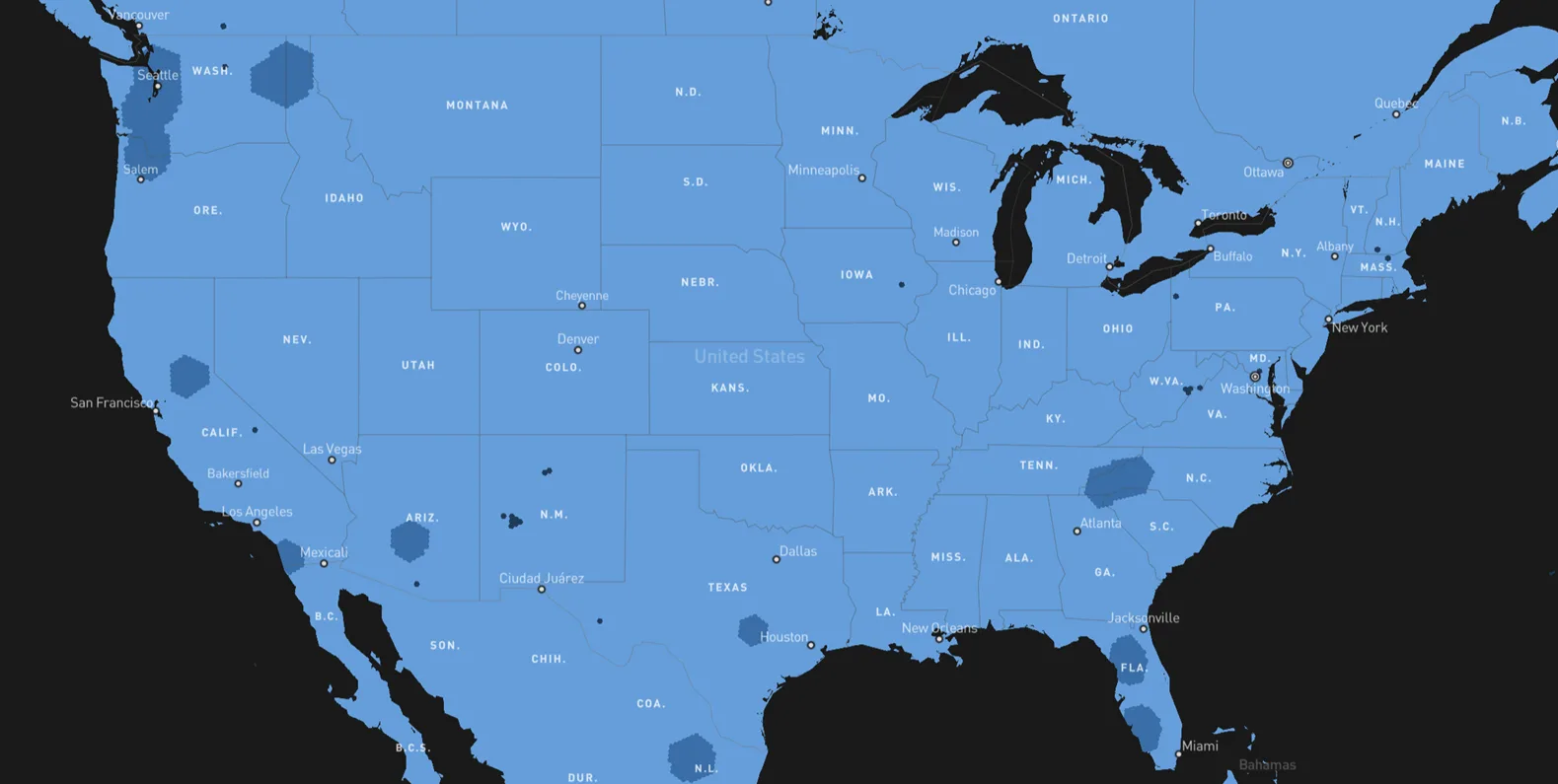- $120 per month
- $349 for Starlink Standard Dish
Starlink Internet Review: Plans, Pricing, and Speeds
What's the best Starlink plan for you?
Best for Home
Starlink Residential
Best for Travel
Starlink Roam
- $50 per month
- $499 for Starlink Mini Dish (Standard Dish compatible)
Best for Business
Starlink Priority
- $290 per month
- $2,500 for Starlink High Performance
Your choices for Starlink hardware
Starlink is one of the only internet providers that requires you to purchase the necessary hardware needed to get online. It has multiple versions of its hardware for purchase.
Starlink Standard

- Current Price: $349
- Features: Kickstand for on-the-go setup, lightweight, improved Wi-Fi
- Compatible plans: Residential, Roam, Priority
- Download speed: Up to 220Mbps
- Best for: Rural home internet, casual travel, small business
- Size: 23.4 in x 15.07 in
- Weight: 7 lb
Starlink Mini

- Current Price: $599 ($449 for current customers)
- Features: Wi-Fi router built into the dish, size and weight of a laptop
- Compatible plans: Roam only
- Download speed: Up to 100Mbps
- Best for: Backpackers, emergency responders, backup internet
- Size: 11.75 in x 10.2 in
- Weight: 2.56 lb
High-Performance

- Current Price: $1,499
- Features: Higher power input and improved field of view for better reliability while moving at high speeds.
- Compatible plans: Local Priority, Global Priority
- Download speed: 220Mbps and above, depending on location
- Best for: Businesses, emergency responders, maritime use
- Size: 22.6 in x 20.1 in
- Weight: 13 lb

Starlink is offering its equipment for free to new customers who commit to 12 months of service. The regions highlighted in white qualify for the deal.

Starlink Personal Service Plans
Starlink's Personal plans are divided into Residential, which requires a fixed location, and Roam, which can be taken on the go.
Starlink Business Service Plans
Starlink's business plans (also called Priority plans) come in two different formats. Local can only operate in the country of purchase, while Global can be used internationally.
Local Priority
Global Priority
How fast can you expect Starlink to work?
The exact download speed and latency of Starlink varies from user to user, and is also dependent on conditions that include location, weather, and network congestion. Starlink's speed map that estimates what download speed and latency you can expect in what state.
These are the typical speeds you can expect from what plans, according to Starlink's Broadband Consumer Labels.
Is Starlink available in your area?
According to the FCC National Broadband Map, Starlink's internet service is available in 99% of the United States. However, due to network congestion, Starlink's Residential service is temporarily sold out in certain cities and regions. Be sure to check Starlink's availability on its website, especially before buying from a third-party retailer.

Starlink availability map as of 4/9/2025. Sold-out regions are highlighted in dark blue. | Image by Starlink
What our reviewer thought of Starlink

"Most Starlink customers I interviewed switched their internet service from one of the other two satellite internet providers. Although they disliked its high entry cost and hands-off approach to customer service, they were happy to switch to the new service and haven’t looked back.
Despite these differences, customers have been satisfied with Starlink overall and say the costs are worth it to no longer have laggy internet and overcomplicated internet packages and pricing. Due to their technological differences, Hughesnet and Viasat can only do so much regarding speed. Instead, they try to remain competitive by making their services more affordable and improving reliability.
Hughesnet and Viasat are viable alternatives that will save you money when using the internet for fundamental tasks like browsing, communication, and lower-quality streaming. However, Starlink is the closest provider to emulating a traditional broadband service."
How do Starlink’s price, speed, and data compare to satellite internet rivals?
How does Starlink stack up against non-satellite alternatives?
*w/ Auto Pay and qualifying mobile plan. Regulatory fees included in monthly price for qualified accounts. See full terms.
**w/ Auto Pay. Available in select areas.
***Consumer data usage is subject to the usage restrictions set forth in Verizon's terms of service; visit: https://www.verizon.com/support/customer-agreement/ for more information about 5G Home and LTE Home Internet or https://www.verizon.com/about/terms-conditions/verizon-customer-agreement for Fios internet.
Starlink FAQ
Starlink internet reports speeds from 20–220 Mbps, but users will experience various speeds dependent on location, time of day, and network congestion. Starlink Priority promises the fastest possible speeds and more consistent service. However, Starlink Priority is much more expensive and may cost more if you buy additional data.
Starlink costs anywhere from $80 to $120 per month for Starlink Residential plans with standard speeds. If you want Starlink Priority, which provides faster speeds but limited data, there are a variety of tiers that range from $65 to $2,510. Starlink also requires upfront equipment fees ranging from $349 at the lowest to $2,500 at the highest. What type of Starlink plan you pick, what kind of equipment you get, plus the data tier and allotment you want will all determine precisely how much Starlink costs. Check out our Starlink data breakdown for more specifics.
Technically, most Personal plans are unlimited. While the service says it would not cut off users from the internet, it does state that in order to control network congestion, it may slow down users' download speeds if it deems they're going over the normal usage. The only exception is the 50GB Roam plan.
Priority plans are based on an allotment of data, which comes in different pricing tiers. They come in 50GB, 500GB, 1TB, and 2TB. There are options to purchase more data in blocks of 50GB or 500GB.
You can use it in your RV with Starlink Roam. You can take it anywhere and use your phone app to connect your dish to the internet. Just go to Starlink’s website to sign up for the portable internet you’ve hoped for.
Starlink Roam costs $165 a month for Unlimited service. There's a more affordable version that's restricted to 50GB per month for $50, which is ideal for weekend trips. Starlink Roam internet also bills monthly with no contract, so you can pause and resume service whenever you want.
Starlink Roam uses the same hardware as Residential, which is $349. There's also the Starlink Mini, which is a more portable version of the Standard dish and costs $599.
Starlink is widely available everywhere in the U.S. However, there are regions where it's "sold out" due to network congestion. The best way to see if you can get Starlink is to enter your address on the Starlink website.
Starlink is designed to work in snow, extreme heat (122 degrees Fahrenheit), extreme cold (-22 degrees Fahrenheit), heavy rain, sleet, and hail. The dish is hydrophobic and has the ability to melt snow, although that warmth might make it attractive to cats.
Starlink is working with astronomers to resolve concerns about Starlink satellites obstructing the natural night sky. Some efforts include updating Starlink software to adjust positioning to make them invisible to the naked eye and deploying sun visors that darken satellites from sun reflections.


